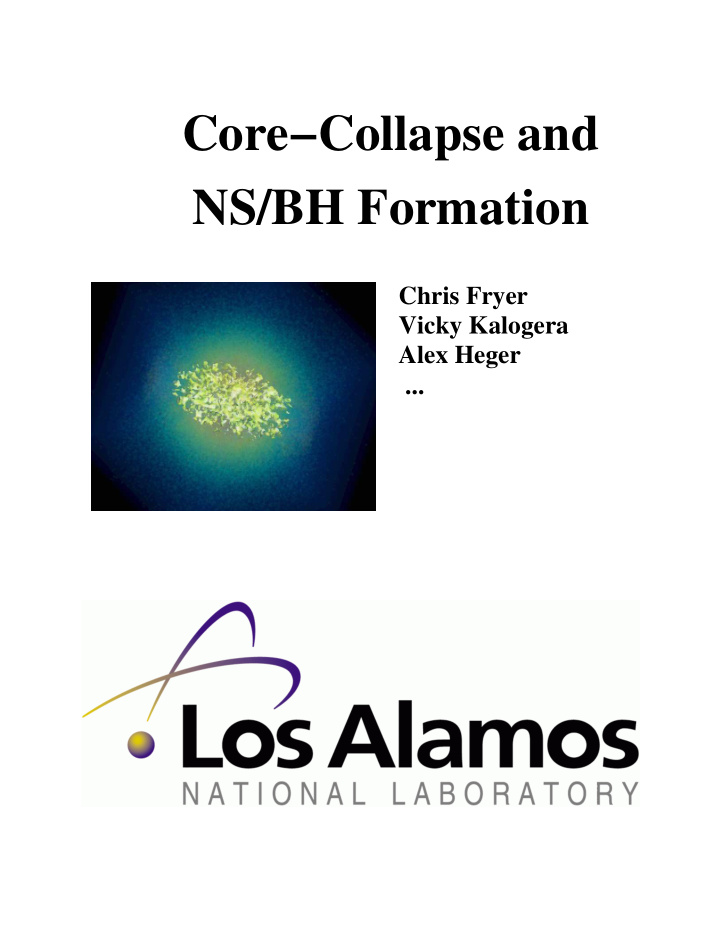



Core−Collapse and NS/BH Formation Chris Fryer Vicky Kalogera Alex Heger ...
✟✠ ✂✄ ✡☛ ✝✞ ☎✆ �✁ Convection Enhanced Supernovae Neutrino Heated Material Rises, Cooling Adiabatically Before Losing Its Energy Via Neutrino Emission Infalling Material Convects Down to the Proto−Neutron Star. It Does NOT Pile Up at the Accretion Shock. Infalling Material Produces Accretion Shock 2 ρ shock = 1 2 v ff P s τ ν =1 Proto NS The Convective Region Must ~50km Overcome this Pressure to Entropy Driven Launch an Convection Explosion ~100−300km
15 Solar Mass Progenitor 25 Solar Mass Progenitor
1000 100 300 10 30 1 3 (C) Alexander Heger, 2001 (baryonic) (logarithmic) final mass (solar masses) m a Z=0 s s 1 a f low mass stars white dwarf t e r c o AGB mass loss r e h e l i 3 u m b CO u r n i n NeO g initial mass (solar masses, logarithmic) 10 neutron star s u p e r n m o a v h e a massive stars s l i e s u x m p l a c o o s t r i e o n c o 30 r e fallback c o l black hole l a p s e direct black hole formation 100 pulsational pair instability very massive stars no remnant - complete disruption pair instability nickel photodisintegration 300 helium photodisintegration black hole direct black hole formation n o m 1000 a s s l o RSG s supermassive stars s
Recommend
More recommend